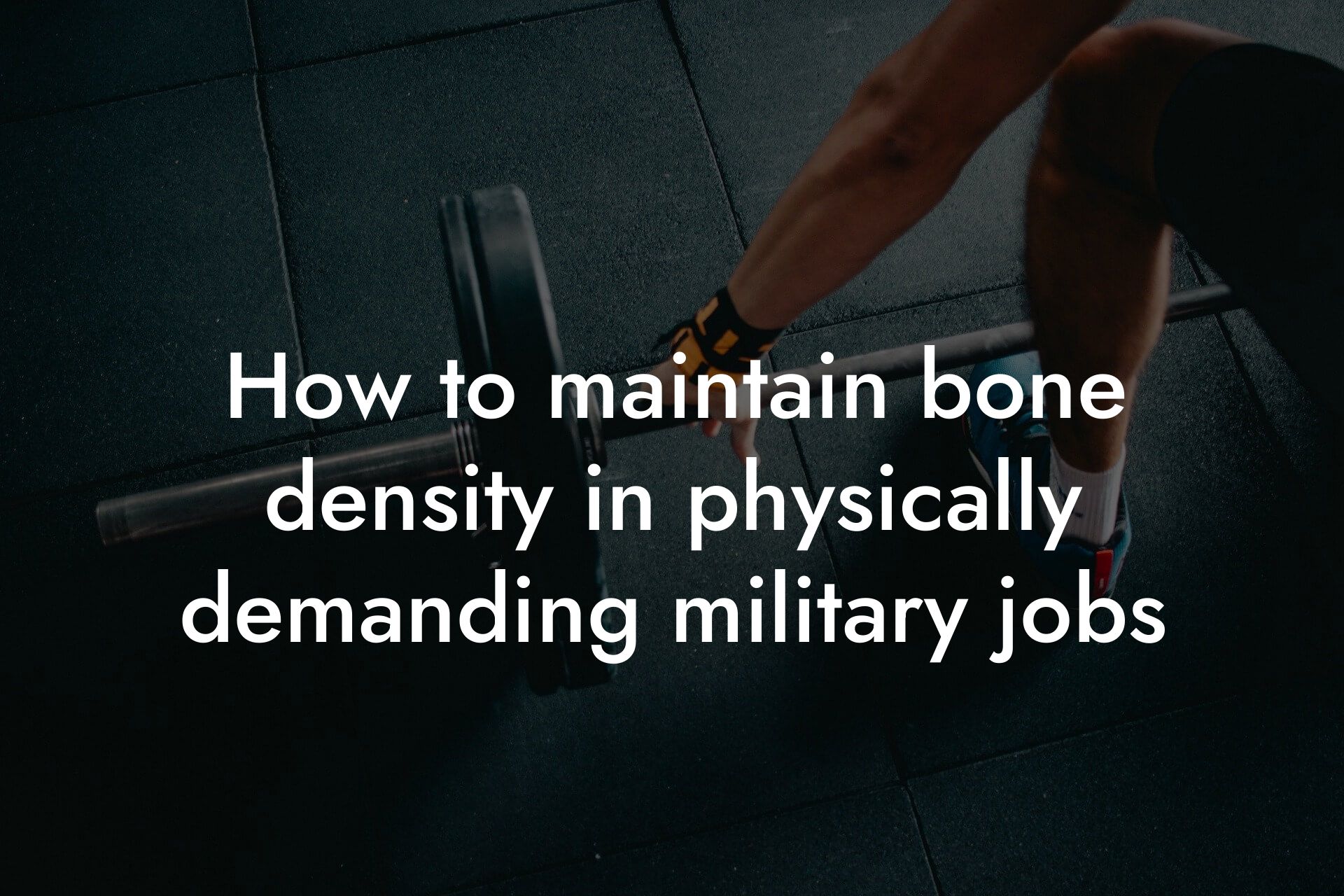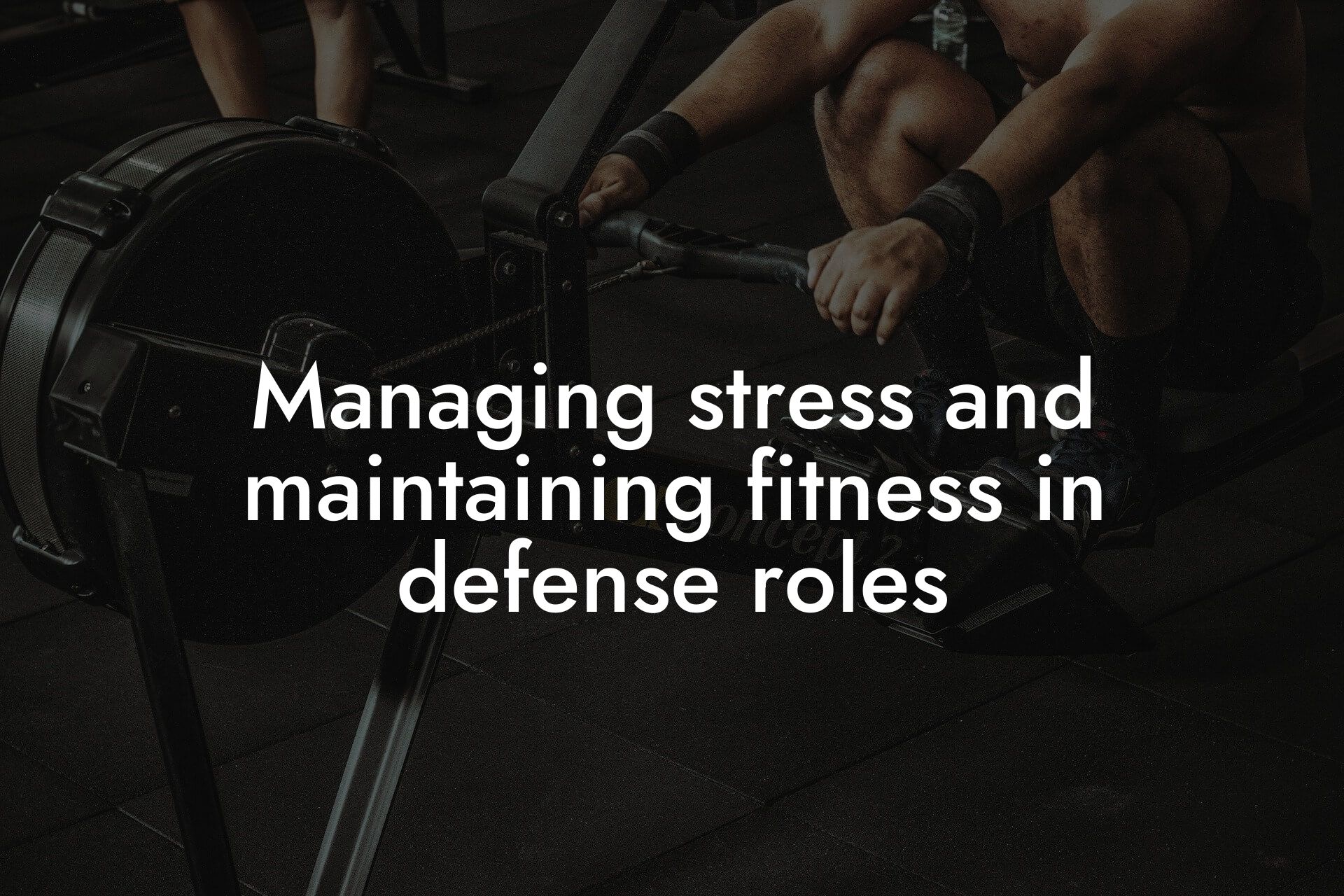As a high-earning professional, you understand the importance of being in top physical condition to perform at your best. Whether you're a law enforcement officer, firefighter, or military personnel, your body composition plays a critical role in your tactical performance. In this article, we'll delve into the impact of body composition on tactical performance, and how understanding your body composition can help you optimize your physical abilities.
Table of Contents
- What is Body Composition?
- The Importance of Lean Mass in Tactical Performance
- The Impact of Excess Body Fat on Tactical Performance
- The Role of Visceral Fat in Tactical Performance
- How Body Composition Affects Tactical Movements
- The Impact of Body Composition on Injury Risk
- How to Optimize Your Body Composition for Tactical Performance
- Using DEXA Scans to Assess Body Composition
- Frequently Asked Questions
What is Body Composition?
Body composition refers to the percentage of fat and lean mass in your body. Lean mass includes muscle, bone, and water, while fat mass includes essential and storage fat. A healthy body composition is crucial for overall health and performance, as it affects your strength, endurance, and agility. In tactical professions, a optimal body composition is essential for carrying out physically demanding tasks, such as wearing heavy gear, performing strenuous exercises, and responding to emergency situations.
The Importance of Lean Mass in Tactical Performance
Lean mass is a critical component of body composition, as it directly affects your strength, power, and endurance. In tactical professions, lean mass is essential for performing tasks that require heavy lifting, carrying, and maneuvering. A high percentage of lean mass also improves your anaerobic endurance, allowing you to sustain high-intensity efforts over short periods. Furthermore, lean mass helps to reduce your risk of injury, as it provides additional support and stability to your joints and muscles.
The Impact of Excess Body Fat on Tactical Performance
Excess body fat, on the other hand, can significantly impede your tactical performance. Carrying excess fat can reduce your endurance, agility, and speed, making it more challenging to perform physically demanding tasks. Additionally, excess body fat can increase your risk of injury, as it puts additional stress on your joints and muscles. In tactical professions, excess body fat can also compromise your ability to wear heavy gear, such as body armor, and may even affect your ability to fit into tight spaces.
The Role of Visceral Fat in Tactical Performance
Visceral fat, also known as belly fat, is a type of fat that accumulates around your internal organs. High levels of visceral fat have been linked to a range of health problems, including insulin resistance, cardiovascular disease, and metabolic syndrome. In tactical professions, high levels of visceral fat can also impair your performance, as it can reduce your endurance, increase your risk of injury, and compromise your ability to respond to emergency situations.
How Body Composition Affects Tactical Movements
Tactical movements, such as crawling, climbing, and jumping, require a high level of strength, power, and agility. A optimal body composition is essential for performing these movements efficiently and effectively. Excess body fat can reduce your power-to-weight ratio, making it more challenging to perform explosive movements, such as jumping and climbing. On the other hand, a high percentage of lean mass can improve your power-to-weight ratio, allowing you to perform tactical movements with greater ease and efficiency.
The Impact of Body Composition on Injury Risk
Body composition plays a critical role in injury risk, particularly in tactical professions. Excess body fat can increase your risk of injury, as it puts additional stress on your joints and muscles. On the other hand, a high percentage of lean mass can reduce your risk of injury, as it provides additional support and stability to your joints and muscles. Furthermore, a optimal body composition can improve your ability to absorb and distribute impact forces, reducing your risk of injury during high-impact activities.
How to Optimize Your Body Composition for Tactical Performance
Optimizing your body composition for tactical performance requires a combination of proper nutrition, regular exercise, and sufficient rest and recovery. A balanced diet that includes plenty of protein, healthy fats, and complex carbohydrates can help you maintain a optimal body composition. Regular exercise, such as strength training and high-intensity interval training, can help you build lean mass and reduce excess body fat. Additionally, sufficient rest and recovery are essential for allowing your body to adapt to the physical demands of tactical training and operations.
Using DEXA Scans to Assess Body Composition
DEXA (Dual-Energy X-ray Absorptiometry) scans are a valuable tool for assessing body composition. DEXA scans use low-level X-rays to measure bone density and body composition, providing a detailed breakdown of your lean mass, fat mass, and bone density. At Tano Performance Group, we use DEXA scans to provide our clients with a comprehensive body assessment, helping them to optimize their body composition and improve their tactical performance.
Frequently Asked Questions
What is body composition, and why is it important for tactical performance?
Body composition refers to the proportion of fat and lean mass in the body. It's a critical aspect of overall health and fitness, particularly for individuals engaged in tactical activities such as military, law enforcement, or first responders. A healthy body composition is essential for optimal physical performance, endurance, and injury prevention.
How does body fat percentage impact tactical performance?
Excess body fat can negatively affect tactical performance by reducing endurance, increasing fatigue, and impairing mobility. High body fat percentages can also lead to decreased strength, power, and speed, making it challenging to perform tasks that require quick reactions and intense physical effort.
What is the ideal body fat percentage for tactical athletes?
The ideal body fat percentage for tactical athletes varies depending on the specific demands of their job or activity. Generally, a body fat percentage between 10-15% for men and 15-20% for women is considered optimal for tactical performance.
How does lean mass impact tactical performance?
Lean mass, which includes muscle mass and bone density, is essential for generating strength, power, and speed. A higher lean mass percentage can improve tactical performance by enhancing endurance, agility, and overall physical capabilities.
What are the risks associated with low lean mass?
Low lean mass can increase the risk of injury, fatigue, and decreased performance. It can also lead to a higher risk of osteoporosis, fractures, and other musculoskeletal disorders.
How can I measure my body composition?
There are several methods to measure body composition, including dual-energy X-ray absorptiometry (DXA), hydrostatic weighing, skinfold measurements, and bioelectrical impedance analysis (BIA). It's essential to consult with a qualified healthcare professional or certified fitness expert to determine the best method for your needs.
What is the role of nutrition in body composition for tactical athletes?
Nutrition plays a critical role in body composition for tactical athletes. A balanced diet that includes adequate protein, complex carbohydrates, and healthy fats can help support muscle growth, recovery, and overall health. A well-planned nutrition strategy can also help optimize body fat percentage and lean mass.
How does hydration impact body composition?
Adequate hydration is essential for maintaining optimal body composition. Even mild dehydration can negatively affect physical performance, leading to decreased strength, endurance, and agility. Proper hydration can help support muscle function, recovery, and overall health.
What is the importance of sleep and recovery for body composition?
Sleep and recovery are critical components of body composition for tactical athletes. Adequate sleep and recovery time allow for muscle repair, growth, and adaptation, which can help optimize body composition and improve physical performance.
How can I improve my body composition for tactical performance?
To improve body composition for tactical performance, focus on a balanced diet, regular exercise, and adequate sleep and recovery. Incorporate strength training and high-intensity interval training (HIIT) to build lean mass and improve cardiovascular fitness. Consult with a qualified healthcare professional or certified fitness expert to develop a personalized training and nutrition plan.
What are the benefits of body composition analysis for tactical athletes?
Body composition analysis can provide valuable insights into an individual's body fat percentage, lean mass, and overall health. This information can help tactical athletes optimize their training and nutrition strategies, improve physical performance, and reduce the risk of injury and illness.
How often should I monitor my body composition?
It's recommended to monitor body composition regularly, ideally every 4-6 weeks, to track progress and make adjustments to training and nutrition strategies as needed. This can help tactical athletes stay on track with their fitness goals and optimize their performance.
What are the common mistakes tactical athletes make when it comes to body composition?
Common mistakes tactical athletes make when it comes to body composition include neglecting nutrition, failing to prioritize sleep and recovery, and not incorporating strength training and HIIT into their exercise routine. These mistakes can lead to suboptimal body composition, decreased performance, and increased risk of injury.
How can I maintain a healthy body composition during periods of high stress or intense training?
To maintain a healthy body composition during periods of high stress or intense training, focus on prioritizing nutrition, sleep, and recovery. Make sure to consume a balanced diet, stay hydrated, and get adequate rest to support muscle recovery and growth.
What is the relationship between body composition and bone density?
Body composition and bone density are closely linked. A higher lean mass percentage can help support bone density, reducing the risk of osteoporosis and fractures. Conversely, low lean mass and high body fat percentage can increase the risk of bone-related disorders.
How can I improve my bone density?
To improve bone density, focus on incorporating exercises that promote weight-bearing activities, such as strength training and high-impact aerobics. A diet rich in calcium and vitamin D can also support bone health. Consult with a qualified healthcare professional or certified fitness expert to develop a personalized plan.
What are the consequences of poor body composition for tactical athletes?
Poor body composition can have serious consequences for tactical athletes, including decreased performance, increased risk of injury and illness, and reduced overall health. It can also impact mental health, confidence, and overall well-being.
How can I get started with improving my body composition for tactical performance?
To get started with improving your body composition for tactical performance, consult with a qualified healthcare professional or certified fitness expert to develop a personalized training and nutrition plan. Focus on making sustainable lifestyle changes, including a balanced diet, regular exercise, and adequate sleep and recovery.
What are the benefits of working with a certified fitness expert or nutritionist?
Working with a certified fitness expert or nutritionist can provide tactical athletes with personalized guidance, support, and accountability. These professionals can help develop a tailored training and nutrition plan, provide ongoing feedback and adjustments, and support overall health and wellness.
How can I track my progress and stay motivated?
To track progress and stay motivated, set specific, measurable, and achievable goals. Use a training log or mobile app to track workouts, nutrition, and progress. Celebrate small victories, and don't be afraid to seek support from a certified fitness expert or nutritionist.
What are the long-term benefits of maintaining a healthy body composition?
Maintaining a healthy body composition can have long-term benefits, including improved overall health, reduced risk of chronic diseases, and enhanced physical performance. It can also improve mental health, confidence, and overall well-being, leading to a better quality of life.
How can I incorporate body composition analysis into my training program?
To incorporate body composition analysis into your training program, consult with a qualified healthcare professional or certified fitness expert to determine the best methods for your needs. Use the data to track progress, adjust training and nutrition strategies, and optimize body composition for improved tactical performance.
Here are some related articles you might love...
- How to maintain bone density in physically demanding military jobs
- Nutrition strategies for maintaining energy in the field
- Managing stress and maintaining fitness in defense roles
- How to prevent injury through physical fitness in the military
- Balancing military duties with personal fitness goals
- Quick workouts for military professionals during downtime
- The role of DEXA scans in military health assessments
- How to maintain fitness during deployment
- The importance of physical fitness for military readiness
Zak Faulkner
Zak Faulkner is a leading authority in the realm of physical health and body composition analysis, with over 15 years of experience helping professionals optimise their fitness and well-being. As one the experts behind Tano Performance Group, Zak has dedicated his career to providing in-depth, science-backed insights that empower clients to elevate their physical performance and overall health.
With extensive knowledge of DEXA technology, Zak specializes in delivering comprehensive body assessments that offer precise data on body fat, muscle mass, bone density, and overall physique. His expertise enables individuals to make informed decisions and achieve their fitness goals with accuracy and confidence. Zak’s approach is rooted in a deep understanding of human physiology, combined with a passion for helping clients unlock their full potential through personalised strategies.
Over the years, Zak has earned a reputation for his commitment to excellence, precision, and client-focused service. His guidance is trusted by top professionals who demand the best when it comes to their health. Whether advising on fitness programs, nutritional strategies, or long-term wellness plans, Zak Faulkner’s insights are a valuable resource for anyone serious about taking their health and fitness to the next level.
At Tano Performance Group, Zak continues to lead our Content Team revolutionising how professionals approach their physical health, offering unparalleled expertise that drives real results.




